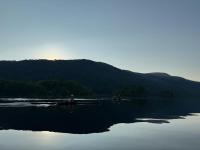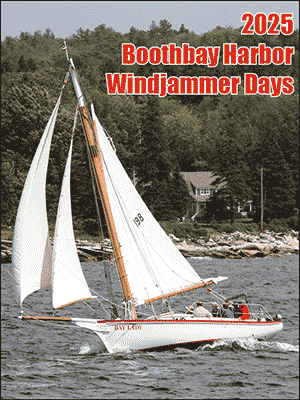Do not squander the Mongomery Dam and its breathtaking falls: Vote No on Camden Question 7
On June 10, Camden voters will be asked to vote on the fate of the Montgomery Dam. It has been said many times that Camden has an “embarrassment of riches” with respect to the it’s scenic beauty. The falls at Montgomery Dam are a centerpiece of those riches.
The proposed first step in a very long, costly, and uncertain process to “free the river” and return its flow to the presumed natural path is removal Montgomery Dam. But it is unclear why this should be the first step in the process.
The Megunticook River Citizen’s Advisory Committee (MRCAC) has recommended removal of the Montgomery Dam. MRCAC has assured voters that the owners of the two private dams upstream at the Knox Mill and Knowlton Street are also eager to remove their dams. At a meeting sponsored by the “Save the Falls” organization on April 27, several members of the MRCAC emphasized this. This begs the question: Why are the voters of Camden being asked to vote on the fate of the Mongomery Dam before these private dams are removed? Shouldn’t these private dams be removed first before the voters of Camden even consider removing Montgomery Dam? If the river is to be “freed”, these private dams must be removed, full stop.
But the voters of Camden have no control or say over what happens to these private dams. What if we remove the Montgomery Dam, lose the beauty of the falls forever, and these private dam owners change their minds, or sell their properties to entities that chose to keep the private dams in place? We will have forfeited one of the most iconic parts of Camden for nothing.
Neither the Montgonery Dam, the Knox Mill Dam or the Knowlton Street Dam impact flooding in downtown Camden, so there are no safety gains achieved by removing Montgomery Dam. The MRCAC members at the “Save the Falls” meeting also indicated that no Camden taxpayer funding would be used for the removal of these two private dams, or for the removal of an estimated 1,000 dump truck loads of contaminated silt that sit just upstream of the Knowlton Steet Dam in the dam’s impoundment. Presumably these dam owners will be looking for federal or state funding to aid in the cost of their removal. What will happen if these funding sources dry up? There is a very good chance of this. What will the town do in the future if these private dam owners use the town’s financial participation as a bargaining chip to move the greater river project along?
The MRCAC was formed with nine members. One member was known to be for being in favor of removing the Montgomery Dam, one member was known for being in favor of keeping the Montgomery Dam, and the other seven members were said to be independent, objective, and open minded.
Having followed the work of the committee, it was obvious early on that the objectivity and open mindedness of these seven committee members was in question. After more than two years, the final vote was eight to one in favor of dam removal. All seven of the independent, objective, and open-minded members voted the same way! This outcome would suggest one of two possibilities. Either the choice was obvious from the outset, in which case the two years of meetings were unnecessary and largely performative, or that the process was biased and the outcome preordained. And the bias may not have been a conscious one. But biased none the less.
This reminds me of a quote by the famous Nobel Prize winning physicist Richard Feynman who worked on the Manhattan Project. According to Feynman, when trying to assure that projects he was working on were as free of bias as possible, he reminded himself of two principles: “The first principle is that you must not fool yourself, and the second principle is that you are the easiest person to fool”.
Finally, the focus on alewife passage up the river when there is no convincing evidence that they did prior to dam placement feels like environmental overreach. One does not have to be indifferent to the environment to have this point of view. In fact, there may be unintended environmental problems caused by introducing fish to the river and the lake. These have not been discussed. For some, environmental issues take on a religious fervor. This recalls the warning of Aristotle: 'Any virtue, if taken to its extreme, becomes a vice.'
The vote on Question Seven this June has been made contingent on the dam removal not using any Camden taxpayer funds. If removing the Montgomery Dam is such a great idea and so important, why not just have a straight up or down vote on removing it? Why tie it to a funding source? If removing the Montgomery Dam is crucial, shouldn’t the taxpayers of Camden be willing to use their tax dollars to do it? Article 7 is an obviously cynical ploy to make the process seem “free”, and if Camden voters are not careful, it might just work.
Having been born and raised in Camden and having spent so much of my adult life here, I think that Camden will never be quite the same if we squander the Mongomery Dam and its breathtaking falls. Let’s not make Camden much less rich. I urge you to vote no on question 7.
Jeffrey Jordan lives in Camden

























